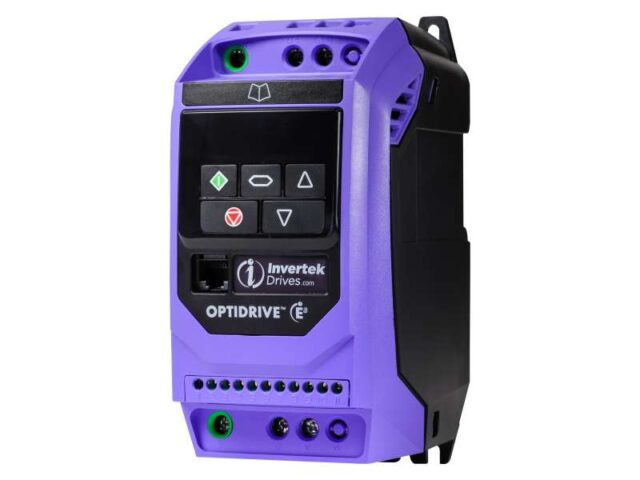Within the industrial sector there are various elements and tools for production, but also for climate conversion and conservation and processing. Precisely from the perspective of technology and industrial processes, the analysis of the main object of focus in question is placed: the frequency converterA essential ring for the production and development of certain sectors. Let's try to understand the main characteristics, what it is used for, the three-phase converter models, and the purposes. A broad review that explores the industrial frequency converter in every part as an instrument of great importance and value.

What is a frequency converter used for?
Let's start in the examination of the industrial frequency converter from the main purpose of this instrument. So let's answer the question “what is a frequency converter used for”. The answer is soon given: this element serves to transform mechanical or electrical input signals into other types of output signals. The ultimate purpose is to make the signal intelligible and readable, for machine control and data acquisition. Therefore a sort of communicative interlude for human-machine interaction which is very useful in industrial processes of any kind and sector. The alternating voltage is thus managed by the user thanks to the intervention of the converter. An alternating voltage that is changed into a variable on the level of a more general discussion regarding amplitude. In fact, the basic electrical network is unable to regulate the output voltage, which therefore must be managed by means of a transformer like the one described. It can be used to vary the speed of a motore from zero to nominal without any problems or interruptions. A key factor in the area of interest as it shortens processing times which would otherwise be quite long. In this way, the workers in the sector who interface with these industrial dynamics have the possibility of adapting the control technique to the conditions of the moment. Last but not least, the direction and management of the rotation: it can also be set using a converter, which also succeeds in this task. Three-phase motors above all require rotation direction control as a result of their high processing capacity.
What are three-phase frequency converters?
In the context of frequency converters we also note some specific models such as three-phase ones, equipped with a motor with a greater capacity. In addition to the more well-known inverters such as those for current and voltage control, we also have the three-phase model. They diverge from traditional formats due to their more complex and effective signal conversion capacity. Definitely cutting-edge skills that are used in processing circumstances that require high process and transformation skills. So in simple terms, compared to other models, the three-phase model has the peculiarity of converting input and output signals with greater speed and range.
What are static frequency converters?
Another important distinction to make when talking about electrical and frequency converters is that between static and dynamic models. In the case of static converters they are capable of trasformare la corrente alternata in continua e viceversa for a flow that is therefore managed in an optimal manner thanks to a similar tool. A preliminary flow setting phase which otherwise would not be settable in the absence of a converter like the one mentioned. The situation regarding the dynamic is different, a model that involves another type of transformation.
What characteristics must industrial frequency converters have?
Let us now examine what must be the main characteristics of frequency converters. Among these we find first of all a compactness of dimensions and construction materials. An aspect of no small importance since in addition to the functionality of the aforementioned industrial instrument, its preparation in terms of installation and practical insertion is also essential. Then we have a high adjustment speed, equally important as the dimensions. Tecnologia all’avanguardia e massima affidabilità the other two constituent components that make a converter an instrument of excellence and extreme value. All in order to make this electric current transformer one of the most effective means when it comes to electromechanical processes.
What technology do industrial frequency converters use?
As highlighted in the previous paragraph in which we examined what must be the peculiar characteristics of a converter, the technology with which it is equipped is certainly among the indispensable components. It must be of modern development, and therefore cutting-edge to support all the functions and skills of the industrial product in question. A frequency converter as mentioned can have different purposes and characterizations by virtue of which it is equipped with a technology that is different each time. The more complex the transformation process, the greater the capacity and number of procedures required of the aforementioned transformer. From direct current to alternating current, as in the case of static ones, or in the case of flow if they are dynamic ones; regardless of the specifics of the industrial process, technology is the main constituent element. The inverter one is certainly among the best possible for an efficient electromechanical transformation. Whether the location involves an electrical panel or wall mounting, the converter technology remains the same quality standard. The same thing can be said for decentralized assembly, which in turn differs from the two previously mentioned. In short, in the case of converter technology, one or the other described characteristic does not have much of an impact, but rather the purpose. For every type of machine or system there is a model that is similar and at the same time versatile on a functional level. The industry of these components is truly specialized and is therefore able to improve the development of the converters year after year. The technological category in particular is the one that is most capable of making continuous and constant steps forward over time, thus allowing the production and marketing of similar instruments that are increasingly performing.
You want to know more and you need more industrial products? Compila l’specific contact form to have an initial consultation!

